Table of Contents
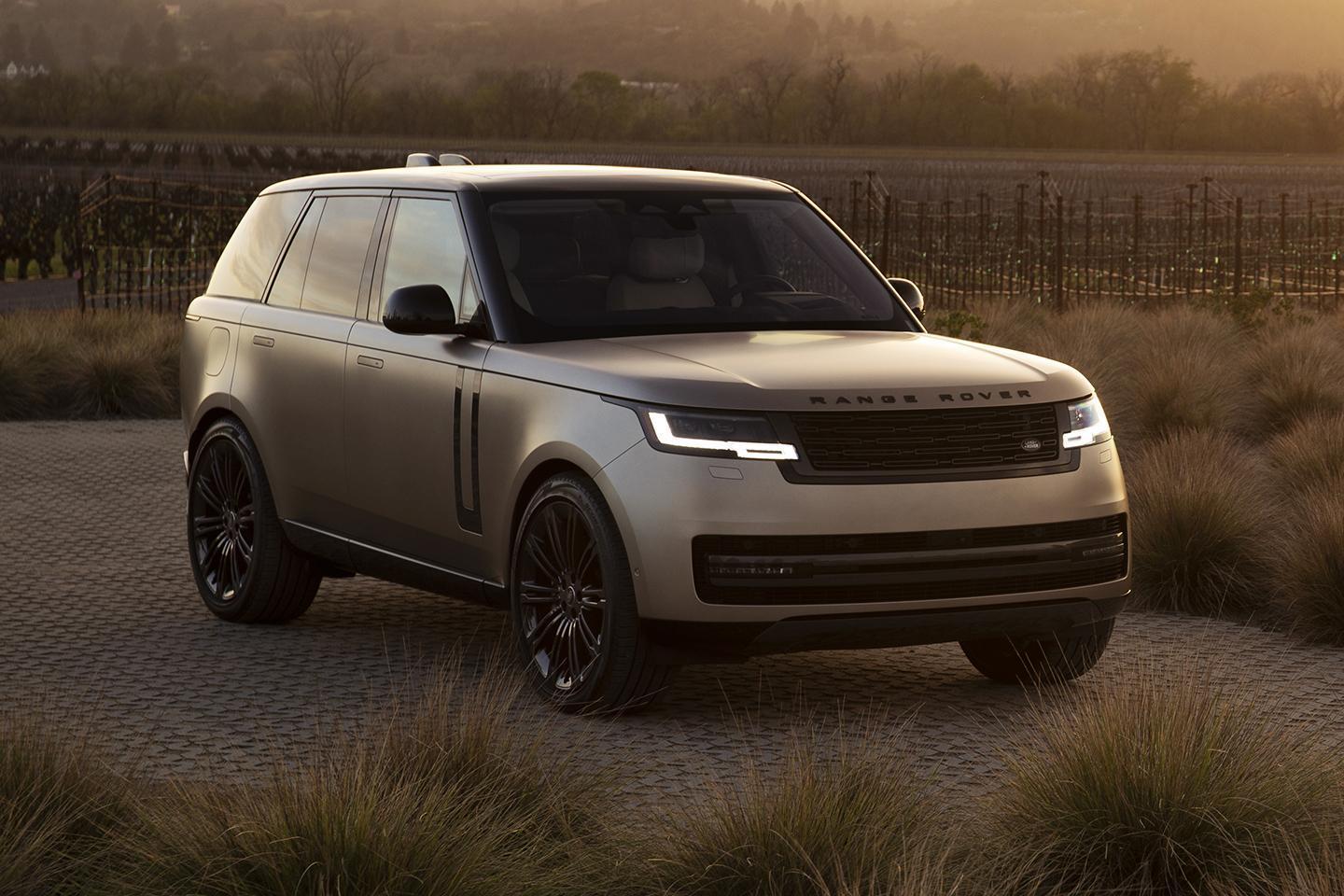
Yes, it’s another front-page lead for another new SUV, but definitely not one that can be accused of being either a late arrival or a cynical imitator. It’s no exaggeration to call the Range Rover the daddy of the entire genre, the original 1970 version’s combination of style, space and V8 awesomeness having inspired the creation of the segment that now dominates the top end of the car industry. The arrival of the new fifth-generation version, known internally by its L460 model name, is definitely big news.
For a perspective on how quickly this rarefied bit of market is shifting, consider how relatively empty it was when the last all-new Range Rover, the L405, was launched in 2012. Back then the most significant alternative posh-roader was the Porsche Cayenne, which got close on ultimate price, but definitely not dynamic mission. Since then the Bentley Bentayga, Rolls-Royce Cullinan and Aston Martin DBX have joined the party – all inspired in large part by the success of the pricier versions of the Rangie. Rolls even admitted the L405 was its benchmark.
Given the outgoing car’s success, it is no great surprise that much is familiar. The new front end design is strongly reminiscent of the old car, although with narrower headlights and a much smoother aesthetic. The side profile is similar, too – with that long rear overhang, a glasshouse that narrows as it moves backwards and the presence that comes from sheer XL-ness. Even the regular wheelbase Range Rover is 5052mm long; the LWB version increases that to 5252mm. The back is where it feels most obviously different, with narrow rear light elements which integrate with the full-width tailgate strip in a slightly cartoonish fashion. It looks, frankly, a bit strange on first impressions – but I suspect it will grow with familiarity, and then spawn a host of imitators.
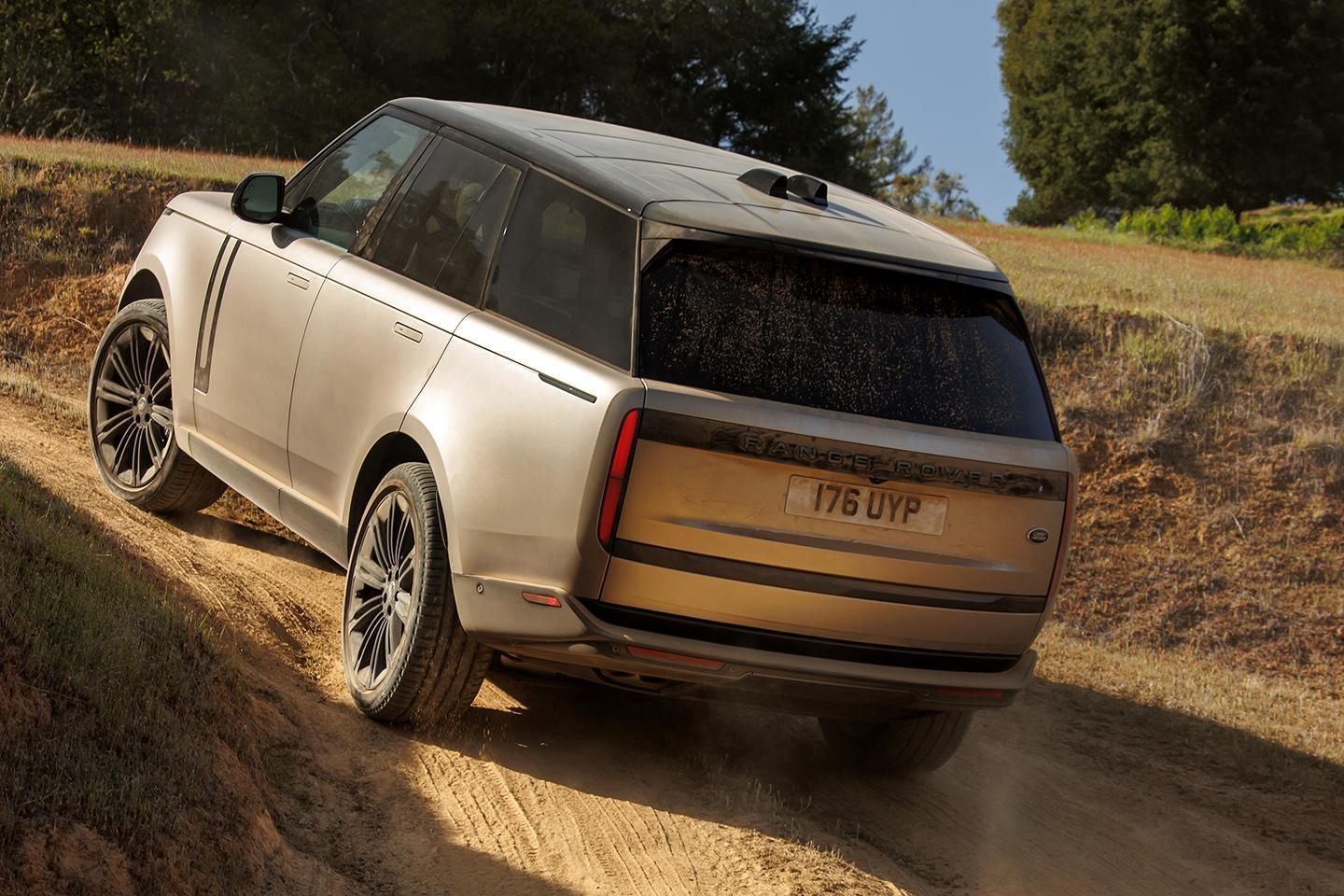
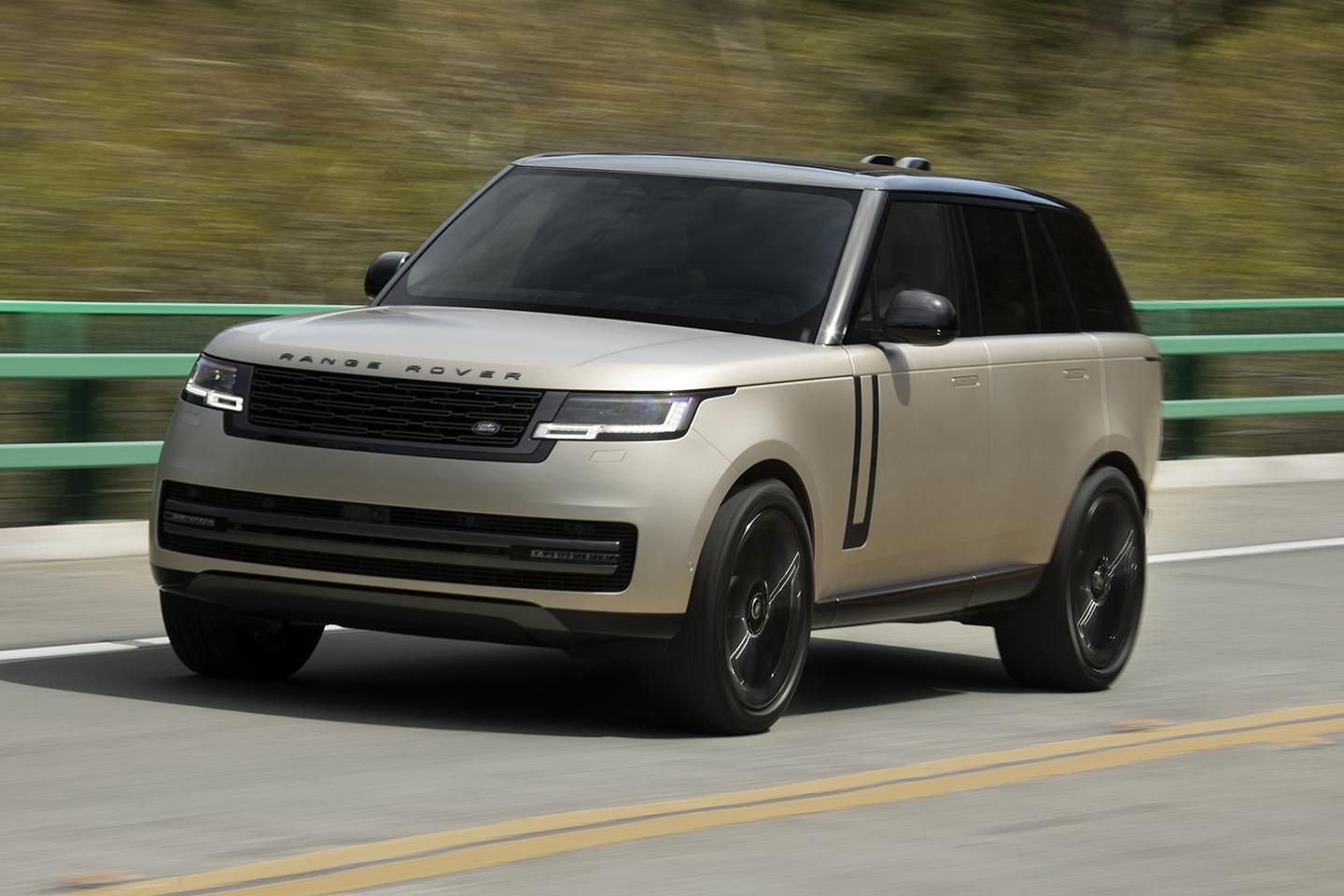
The interior seems less radical. It’s roomy, well finished and gains the inevitable option of non-leather finishes in place of the wall-to-wall cow that used to come as standard, the leather-like cloth trim in the HSE I drove looked and felt pretty good. But Land Rover’s design team have also encountered the same problem as the rest of the upmarket car industry – there is no such thing as a premium-feeling touchscreen. The new 13.1-inch one that dominates the centre of the dashboard is crisply rendered and runs JLR’s smart new Pivo Pro UI system, a vast improvement on the old InControl Touch that the L405 had for most of its life. But there is no tactile joy to be found in using it, even with clicky haptic feedback turned on. Conventional rotary temperature controls sit below this, and there is still a pop-up mechanical selector for the various Drive Select dynamic modes.
While the Range Rover’s structure is new, sitting on the spiffy new MLA Flex architecture, most of the launch powertrain options are carried over from the last car’s final facelift. That means a choice of inline six petrol and diesels at the bottom of the range, both featuring 48-volt mild hybrid assistance through belt-integrated starter generators, with two different plug-in hybrids set to follow shortly afterwards. We’re also promised a full EV version as soon as 2024. But the more exciting news is the arrival of a new 4.4-litre twin-turbo V8 to replace the supercharged 5.0-litre V8.
The limited number of 4.4-litre twin-turbo V8s in current production gives a clue to its origin as a BMW powerplant, a neatly filled circle to the naturally aspirated M62 BMW V8 that the L322 Range Rover launched with. Late combustion compliance politics makes for some strange bedfellows. Running Land Rover bespoke ECU tune, the new motor makes 530hp and 553lb ft of torque, driving through a standard eight-speed ZF gearbox and two-speed transfer case. All L460s have the selectable low-range, go-anywhere credentials still considered vital to the badge.
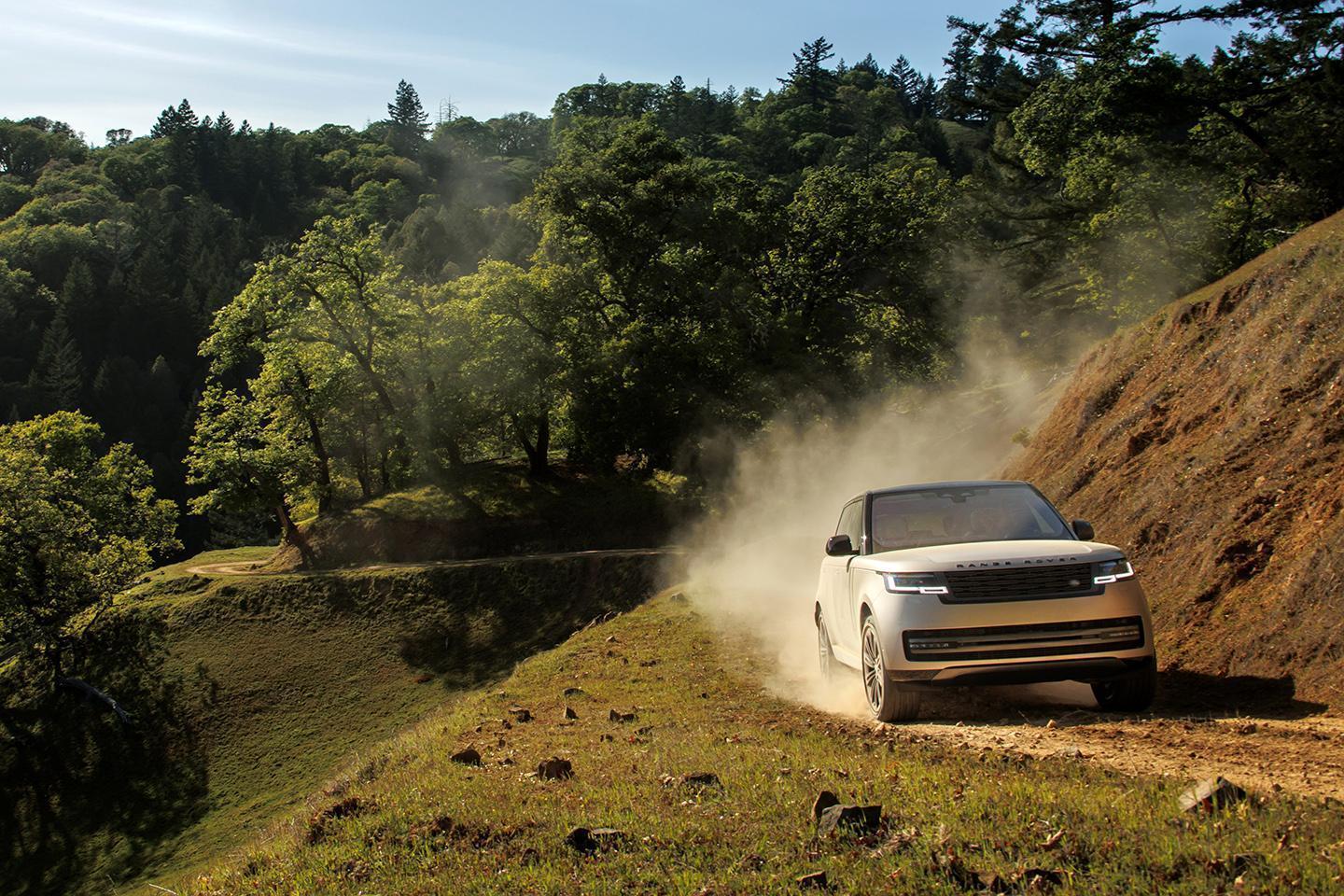
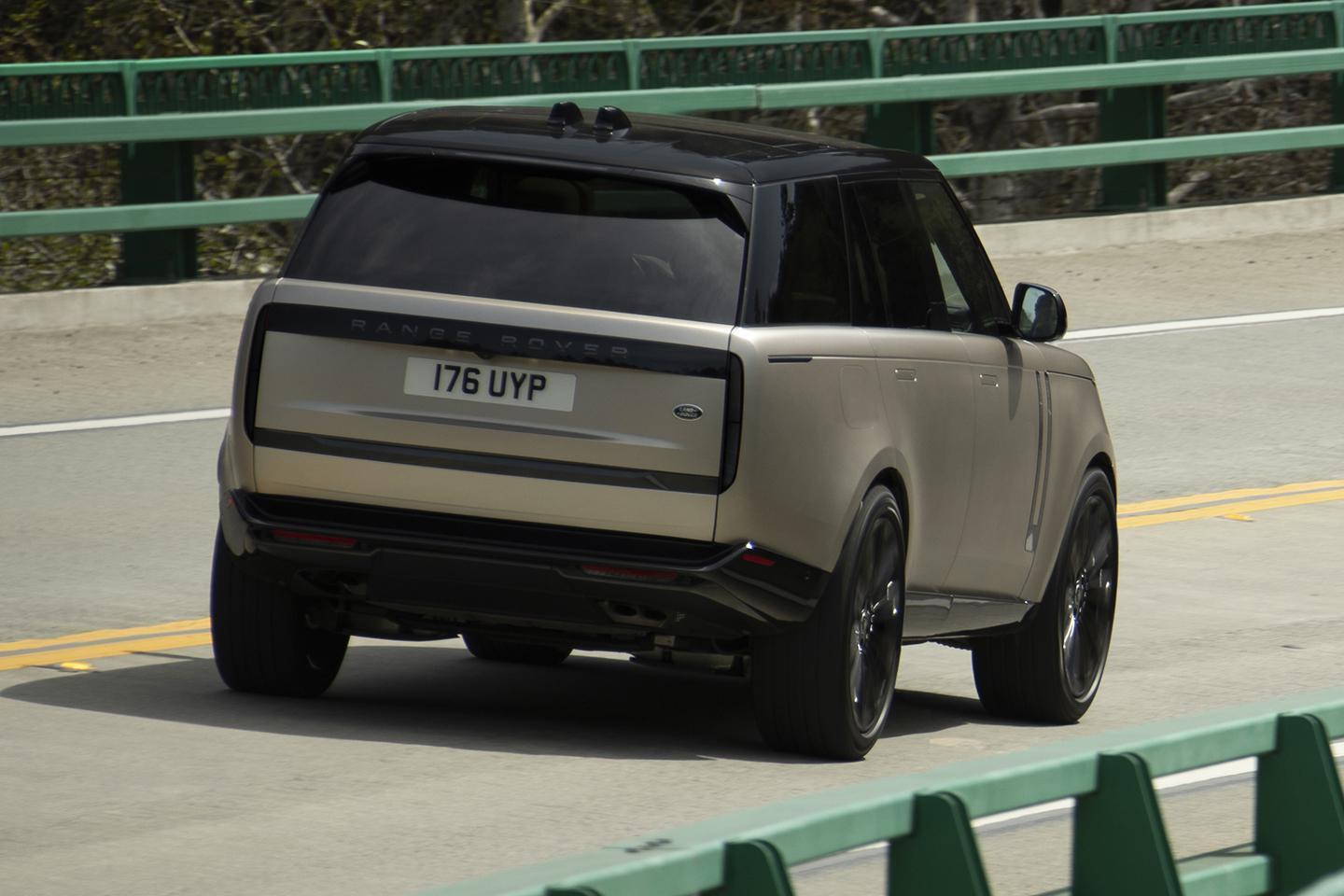
There are many other tech highlights. Rear steering is standard on all launch spec cars, this able to add up to 7.3-degrees of assistance to improve manoeuvrability. Like the previous three generations the L460 also gets height adjustable air springs along with adaptive dampers, while also gaining one of the increasingly fashionable active anti-roll systems. Above the waterline it gets soft close doors, with Land Rover’s familiar hidden handles, active cabin air filtration to remove tiny particulates and even some viruses, plus active noise cancellation. UK on-the-road prices will start at £99,375 for the base D300 SE – a single option box tick will tip that into six figures – and rise to £178,220 for the LWB P530 V8 SV that will sit atop the range at launch.
There were three powertrain variants on the launch in California, these being the six cylinder petrol and diesel, plus the V8. But a flight nightmare that led to a fun, action-packed 36 hour wait at Heathrow meant there was only time to drive two of them in California. Which, in my case, were the D350 diesel and the P530 V8. Which was probably the optimal pairing from a British perspective.
You might be reading an increasing number of obituaries about dirty old diesel, but there is no arguing that compression ignition continues to suit the Range Rover particularly well, especially in the 3.0-litre six’s more powerful 350hp guise. The Ingenium engine lacks the muscular soundtrack the old V8 produced when fully stoked, but the new motor is both more effective and considerably more refined. On Land Rover’s numbers the D350 can dispatch the 0-60mph drag in just 5.8-sec, which is hardly hanging about for a 2.5-tonne SUV.
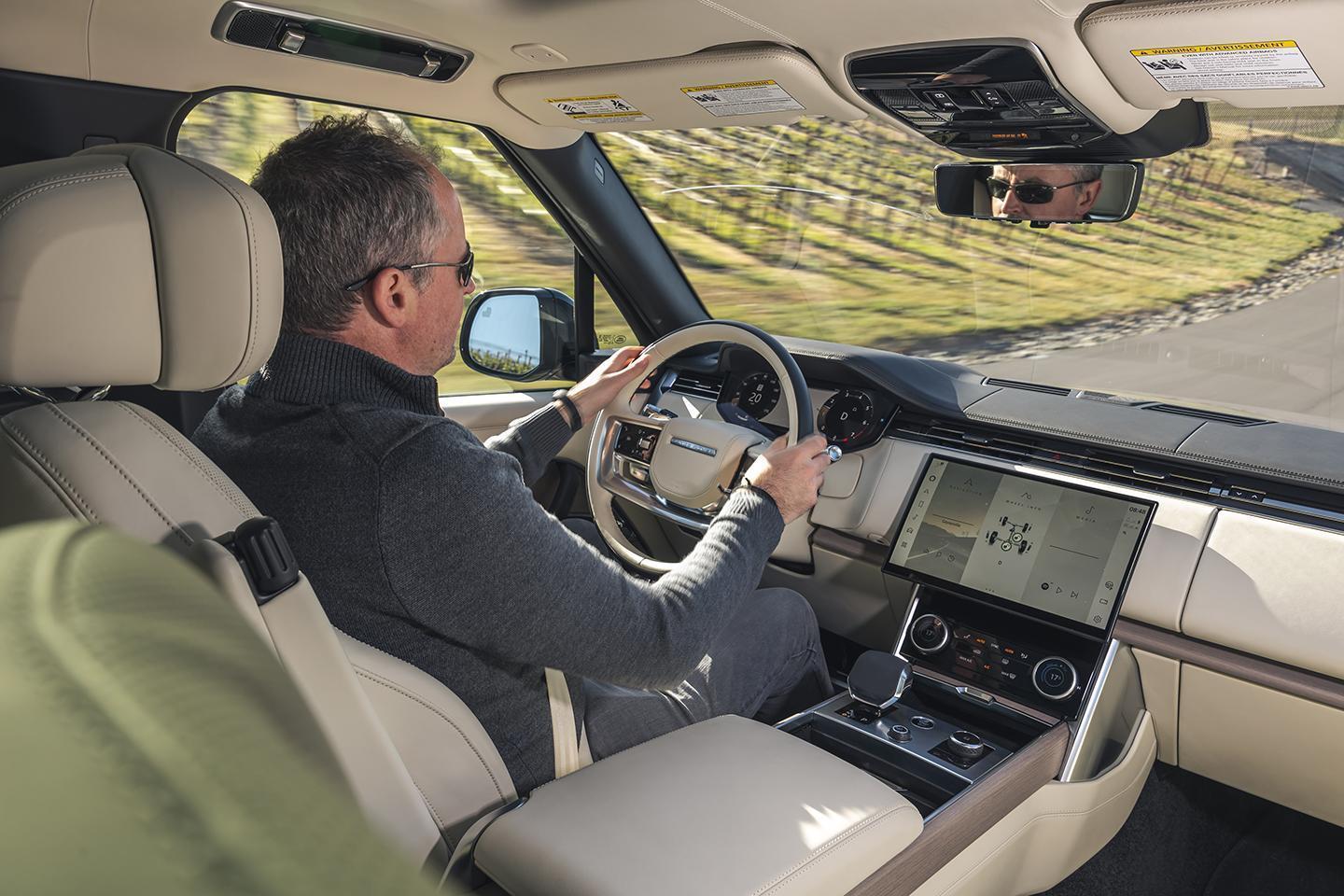
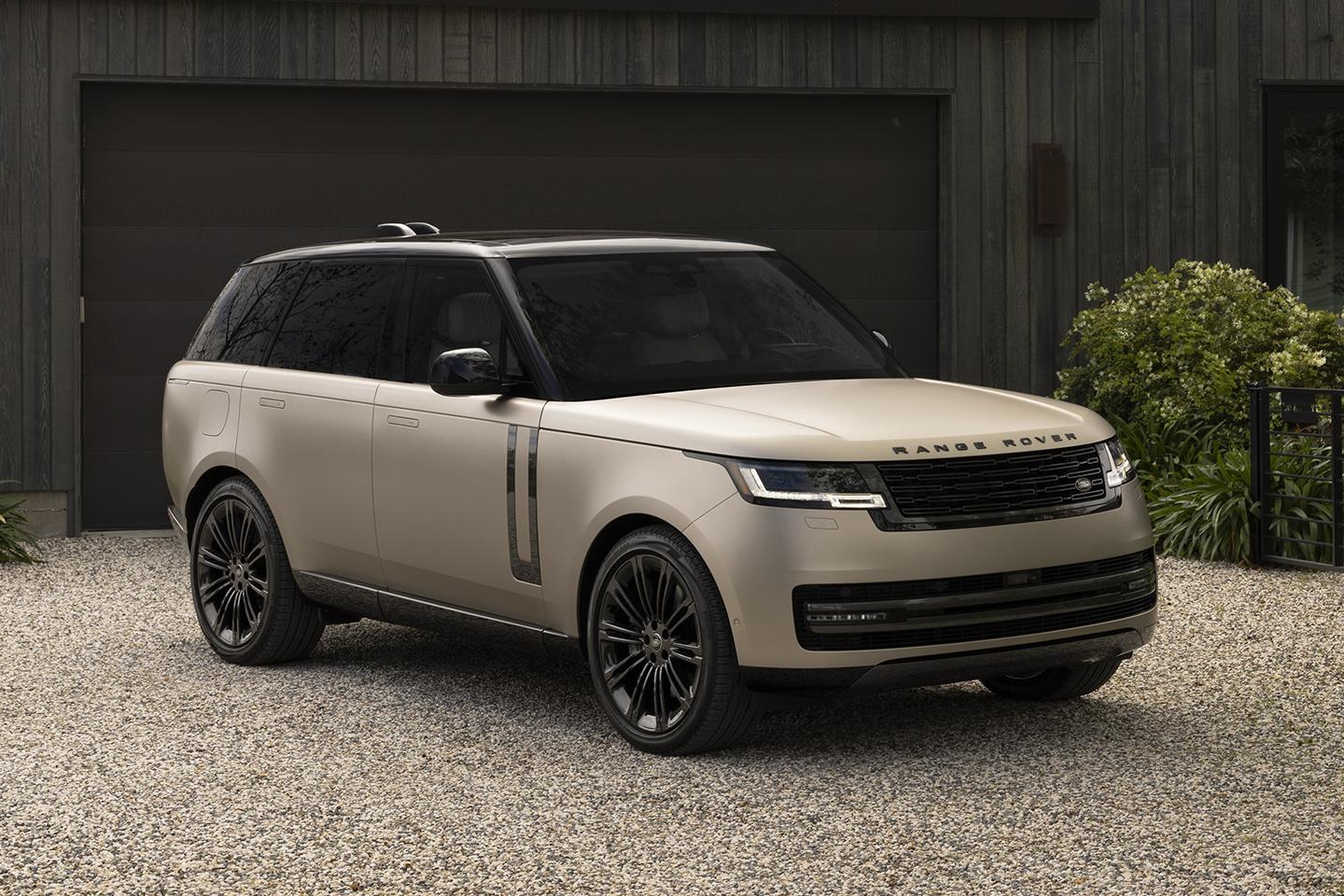
But it’s under gentle use that the D350 impressed more, the eight-speed gearbox both trusting in the engine’s abundance of peak torque, holding gears rather than kicking down when gradients steepened, or throttle pressure changed slightly, while also having the happy knack of shifting between ratios as invisibly as the slushtastic exemplar which was a 1970s Borg Warner three-speeder. Pushed harder the accelerative forces grow but the drama doesn’t, even under manual control the engine doesn’t rev beyond 4,200rpm. But it feels more than quick enough.
The L460’s standard air suspension is pillowy-soft over bigger bumps, with the active dampers allowing enough wheel travel to either fill or absorb undulations while acting quickly to stop secondary motions. Cornering forces produced the unmistakeable sensation of lean, to the extent I had to check the D350 was fitted with the 48V-enabled anti-roll system which applies torque to the roll bars to counter the natural tippiness of something so big and tall. It was, but the system is obviously calibrated to reduce roll rather than, as on cars like the Aston Martin DBX, to try and eliminate it.
Steering power assistance is generous, but the responses behind it are accurate. I wouldn’t describe the D350 as feeling like a point and squirt sportscar – but it held its own on some of NorCal’s twistier roads and can be hustled at a fair speed if the mood takes. Which it probably won’t; as with its recent predecessors the biggest limiting factor on L460 chassis loadings is likely to be the green colour that passengers turn as speeds increase. Tighter turns also produced some inelegant squeal from vast 23-inch Pirelli Scorpion all-season tyres. While the brake pedal is also softer than the norm for sporty SUVs, it is easy to modulate despite the presence of an e-booster. Refinement is deeply impressive, too. I was posed to be critical about the presence of slight wind rustle from the top of the windscreen around 75mph, but then I realised the only reason I was noticing this was the total lack of any other distraction.
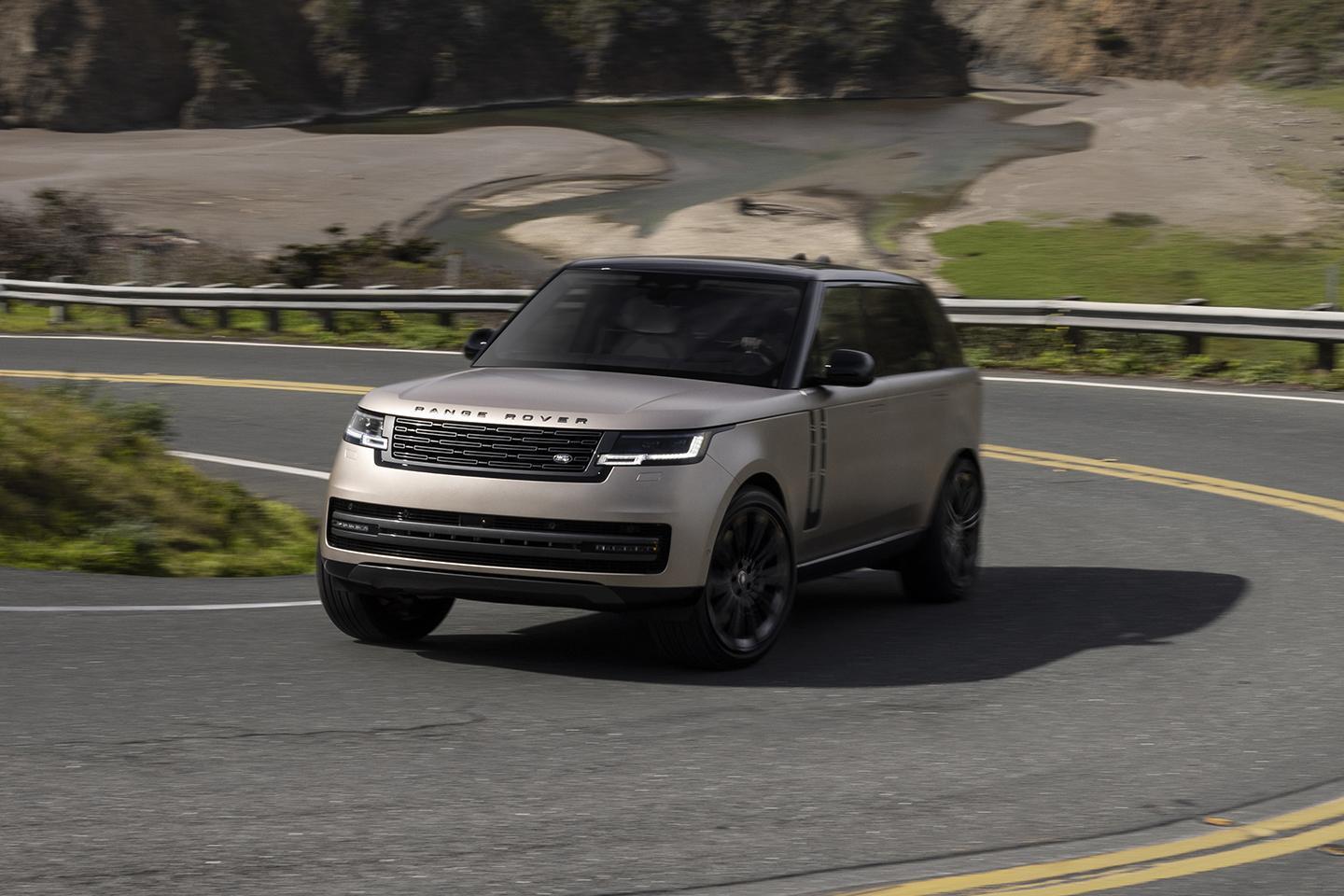
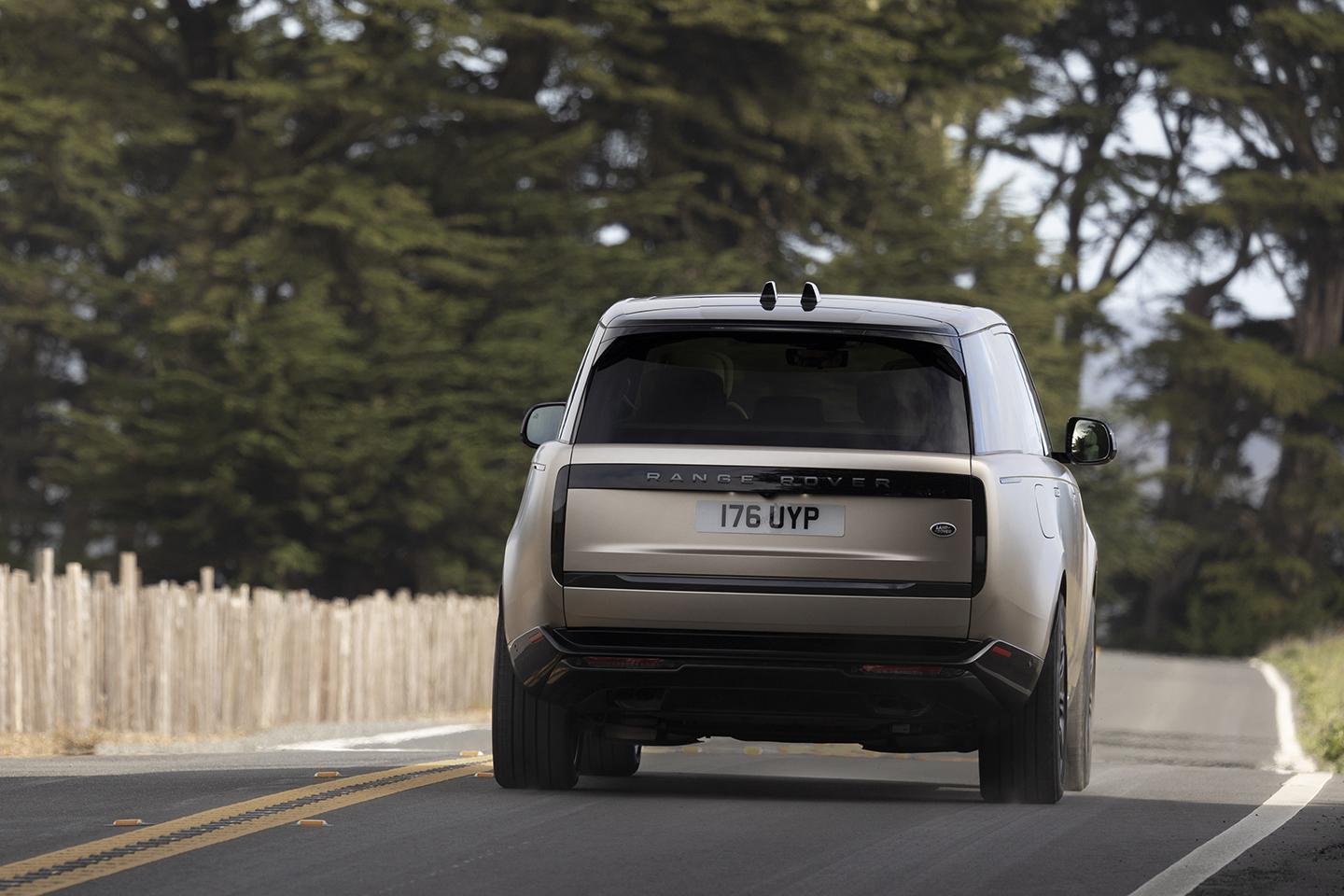
Swapping into the P530 V8 changes both the soundtrack and the quantities of accelerative G-forces that can be easily summoned, but it doesn’t deliver a dramatic change to the rest of the driving experience. The new engine suits the car well and, for the most part, feels like a considerable step on from the venerable supercharged unit that it effectively replaces. The exhaust note is muted when trundling; using no more than the top half-inch of accelerator travel produces both respectable real-world thrust and almost no sense that there is a V8 up front. Pushing harder does produce some fruitier harmonics, but the engine never turns loud.
It feels snappier and has more top end urge than its predecessor did, also lacking the 5.0-litre’s sense of having a huge flywheel. But throttle calibration didn’t feel quite perfect on the three P530s I drove, one of which being a long wheelbase SV, with an occasional snatch under anything but a gentle start. To be honest it was one of the few areas where the car didn’t feel spot-on. But the V8’s superpower is undoubtedly its ability to combine serious speed with dynamic calmness. It seems unlikely too many buyers are going to be choosing the P530 for all-out performance, but it is seriously fast when extended: a claimed 4.4-second 0-60mph time makes it just a tenth slower than the outgoing Range Rover Sport SVR.
Land Rover launches traditionally include some serious off-roading – the L322 Range Rover introduction started by driving the car over an aircraft hangar and then later through a river. But this time we got… a gravel track. This was a steeply graded and led to the top of a scenic hill, including several switchback turns which allowed the L460 to demonstrate the improved turning circle given by its new rear steer system. But challenging it was not; I’m pretty sure a front-drive Evoque could have reached the summit without breaking sweat. Testing the multitude of off-road modes will have to wait until we can get cars somewhere more demanding, but there is little doubt the new Range Rover will be just as adept as its predecessor in the true wilderness.
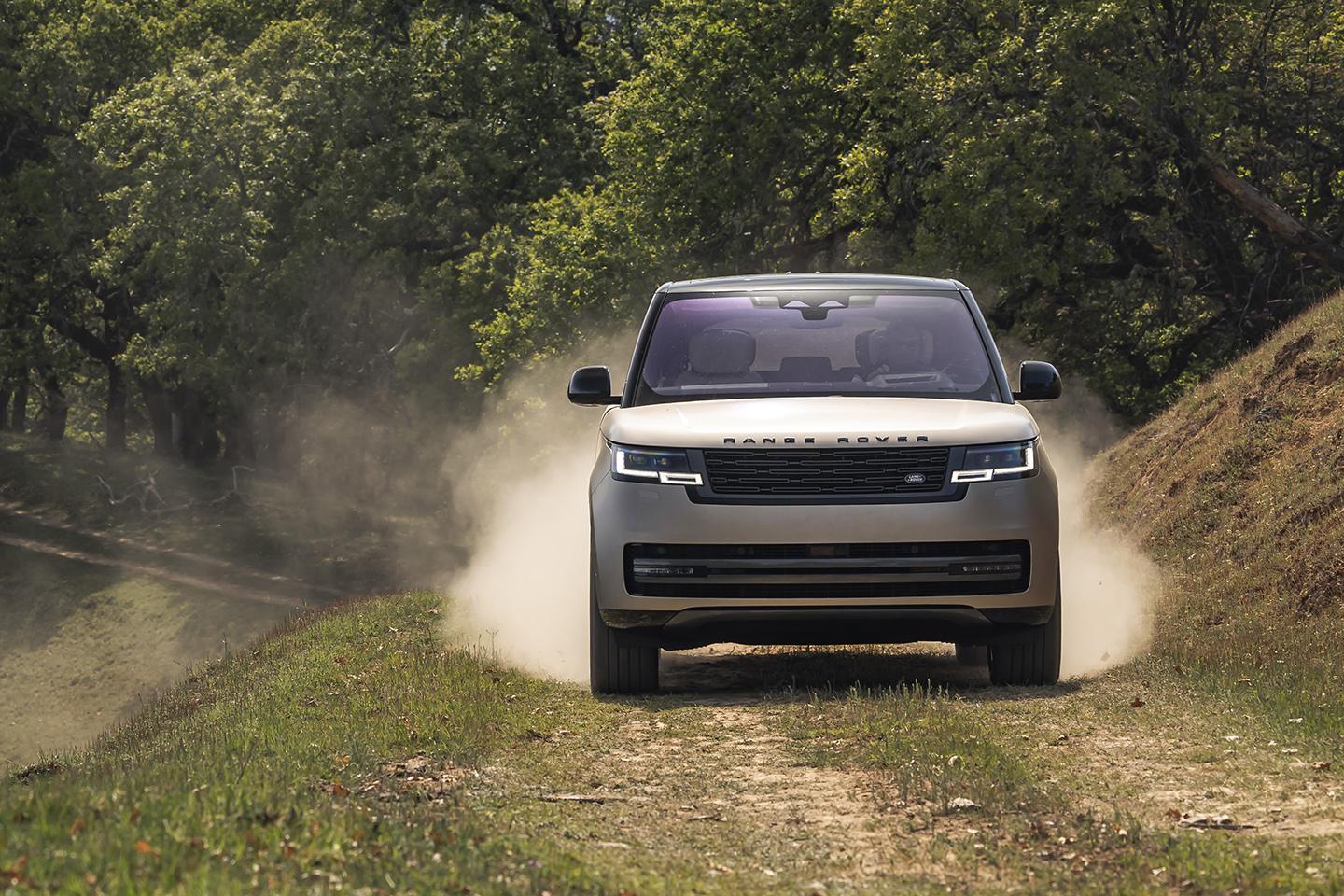
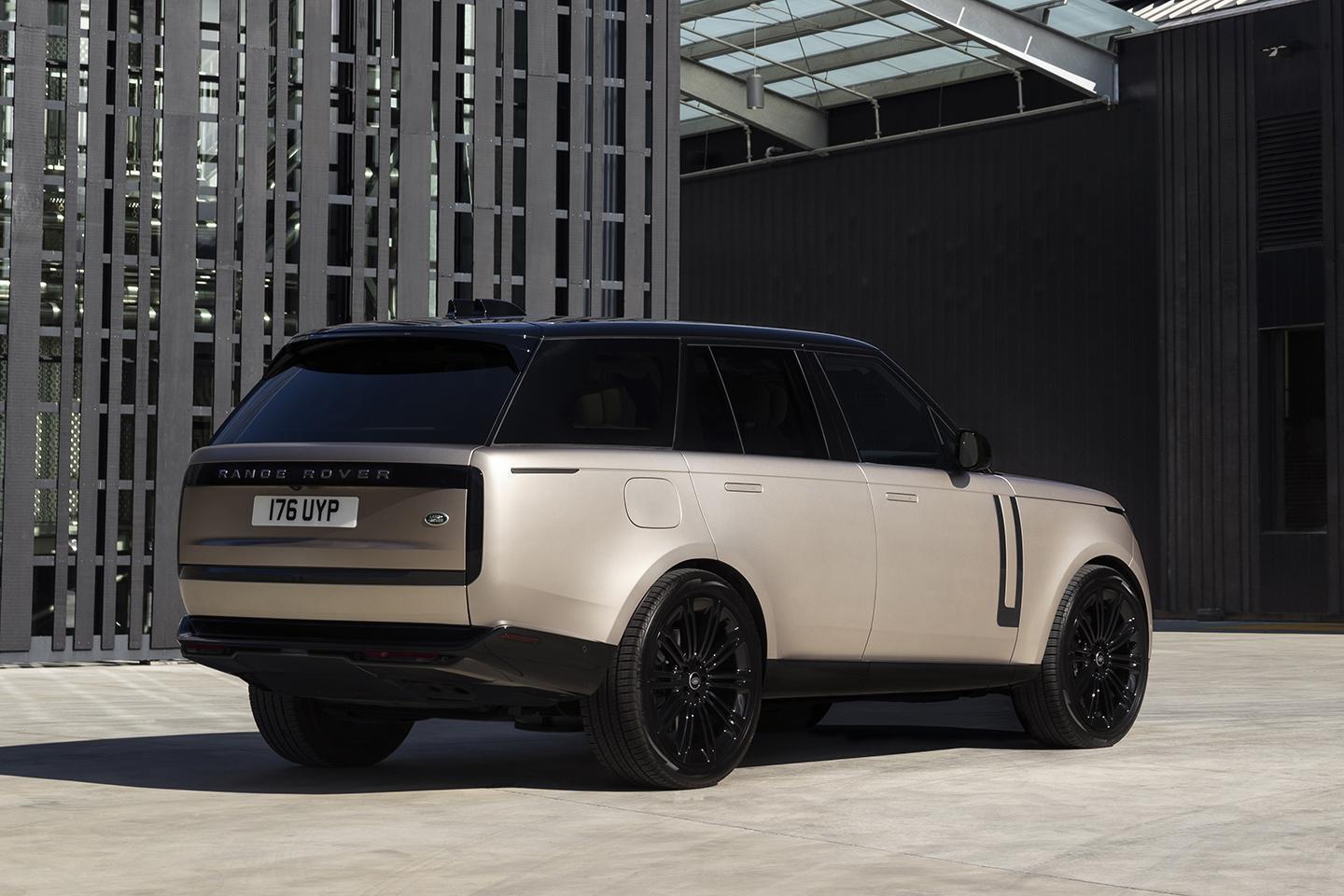
While many high-end SUVs want to be fast and athletic, the new Range Rover is happy to be soft and cossetting, leaving the dynamism to its forthcoming Range Rover Sport sister. As such, it is a true luxury car, and a direct rival to supposedly posher alternatives like the Bentayga, Cullinan and DBX – the sort of company that makes even the seriousness of the L460’s price tag seem like respectable value.
The Range Rover has been flattered by fawning imitation in recent years. But, on first impressions, the new car will continue to be the benchmark that everyone else gets judged by. It continues to feel like the genuine article.
Specification | Range Rover D350 HSE
Engine: 2997cc, straight six, diesel, turbocharged
Transmission: Eight-speed auto, all-wheel drive
Power (hp): 350@4,000rpm
Torque (lb ft): 516@1,500rpm
0-60mph: 5.8 seconds
Top speed: 145mph
Weight: 2,505kg
MPG: 34.2 (TEH)
CO2: 217 (TEH)
Price: £108,775
Specification | Range Rover P530 First Edition
Engine: 4395cc, V8, twin turbo
Transmission: Eight-speed auto, all-wheel drive
Power (hp): 530@5,500rpm
Torque (lb ft): 553@1,800rpm
0-60mph: 4.4 seconds
Top speed: 155mph
Weight: 2,585kg
MPG: 23.7 (TEH)
CO2: 270 (TEH)
Price: £140,420
